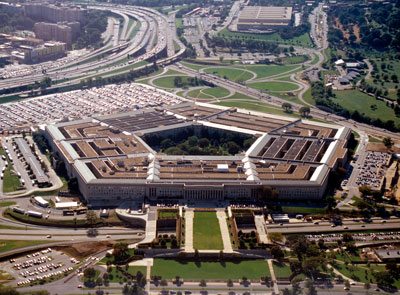On the 10th day of the partial government shutdown, Defense Department civilians excluded by law from Defense Secretary Chuck Hagel’s Oct. 7 recall to work of thousands of fellow employees still await an end to the political standoff that sent them home and stopped their paychecks Oct. 1.
Hagel said Oct. 5 the department tried to “exempt as many DOD civilian personnel as possible” from furloughs and will continue to try to bring all civilian employees back to work as soon as possible.
“Ultimately,” he added, “the surest way to end these damaging and irresponsible furloughs and to enable us to fulfill our mission as a department is for Congress to pass a budget and restore funds for the entire federal government.”
According to a Defense Civilian Personnel Advisory Service reference guide called “Pay and Leave during the Fiscal Year 2014 Shutdown Furlough,” employees furloughed Oct. 1 and not recalled to work will receive regular pay and allowances for hours worked through Sept. 30. They’ll also get a partial paycheck for the pay period including Oct. 1-5.
DOD civilians will stay in nonpay, nonduty status until recalled to duty. If they are in nonpay, nonduty status on the days before and after Columbus Day, they won’t receive pay at that time for the holiday.
Congress must pass legislation to restore pay and allowances for all days spent in furlough status before any employee goes back into pay status. If such legislation is passed, employees will be paid for the time they spent conducting shutdown activities on Oct. 1 but they won’t get that pay until a 2014 appropriation is approved for the department. At that time they’ll receive pay for the Columbus Day holiday.
Furlough affects leave accrual, according to the reference guide. In a separate furlough earlier this year triggered by the budget sequester, most employees were ordered to take six unpaid days, or 48 hours, off work. During the current round of furloughs brought on by the government shutdown, when employees reach a total of 10 furlough days this month, or 80 hours, on or around Oct. 4, they’ll lose the sick leave and annual leave they would have earned during the pay period.
Once an employee reaches 80 hours of nonpay time during a calendar year, leave is no longer accrued. A new 80-hour threshold begins the following pay period.
For individuals or families who are struggling because they’re not working and not getting paid, some help may be available through state unemployment compensation agencies.
According to a fact sheet on unemployment insurance for federal workers, the Unemployment Compensation for Federal Employees, or UCFE, program is administered by state unemployment insurance agencies. In general, eligibility is determined by the state where an employee is assigned to duty.
Furloughed DOD civilians may apply on or after the first day they’re furloughed and put in nonpay status. Furloughed employees should be eligible as long as they meet all other state eligibility factors, according to the fact sheet.
To file claims, DOD civilians can contact the unemployment insurance agency in the state where they work. Such agencies usually have websites, online forms and telephone numbers to call for information or to submit applications by phone.
Employees may be asked to provide a form SF-8 to verify an agency mailing address or a form SF-50 to verify wages. If these documents are unavailable, the state may request proof of wages such as earnings and leave statements or last year’s W-2. The state may also request an affidavit certifying that the employee is not working because of the furlough and to verify wages.
Amounts paid vary according to prior earnings. Most states pay a maximum of 26 weeks of regular benefits. Once the shutdown ends and employees have returned to work, regardless of whether they have received paychecks, they are no longer eligible for benefits.
Some states require applicants to serve a waiting week, the fact sheet states. This means that after a claim is approved, the first week for which individuals are entitled to benefits is an unpaid week.
Most states issue payments to eligible individuals within 14-21 days after the claim is approved.
On Oct. 5, the Federal Employee Retroactive Pay Fairness Act passed the House by a vote of 407-0. The Senate hasn’t yet taken action on the bill but if they do and President Barack Obama signs it into law, furloughed federal employees will receive back pay for the time they’ve been out of work once the shutdown ends. Any lost leave would also will be restored.
According to the fact sheet, if Congress passes legislation that retroactively provides for the payment of salary, states generally require repayment of unemployment benefits paid out. States will advise affected claimants if benefits are overpaid, the fact sheet states, and provide repayment options.











